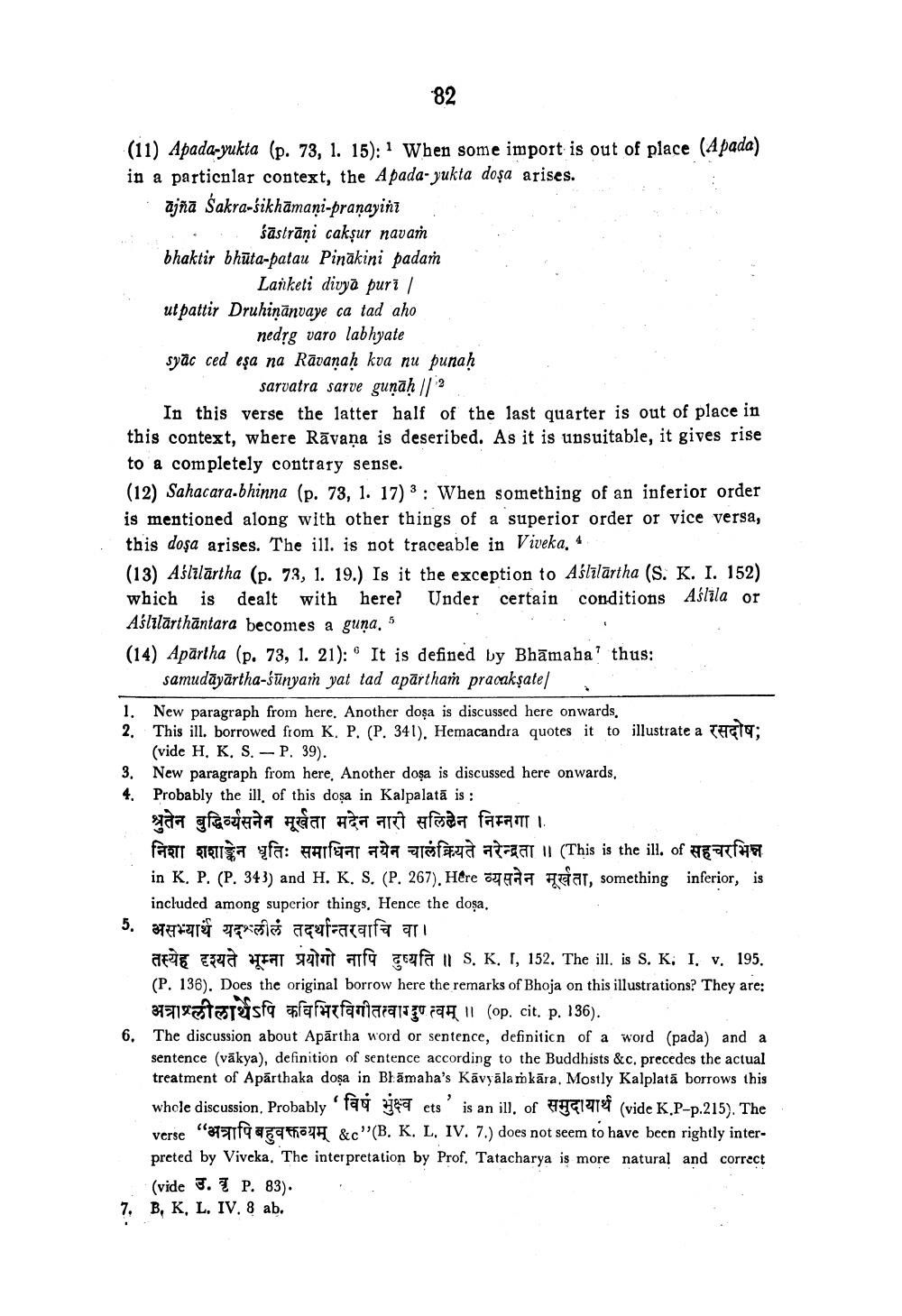________________ . (11) Apada-yukta (p. 73, 1. 15): 1 When some import is out of place (A pada) in a particnlar context, the A pada- yukta dosa arises. ajna Sakra-sikhamani-pranayini sastrani caksur navam bhaktir bhuta-patau Pinakini padan Lanketi divya puri / utpattir Druhinanvaye ca tad aho nedrg varo labhyate syac ced esa na Ravanah kva nu punah sarvatra sarve gunah // 2 In this verse the latter half of the last quarter is out of place in this context, where Ravana is deseribed. As it is unsuitable, it gives rise to a completely contrary sense. (12) Sahacara-bhinna (p. 73, 1. 17) 3 : When something of an inferior order is mentioned along with other things of a superior order or vice versa, this dosa arises. The ill. is not traceable in Viveka. (13) Aslilartha (p. 73, 1. 19.) Is it the exception to Aslilartha (s. K. I. 152) which is dealt with here? Under certain conditions Aslila or Aslilarthantara becomes a guna." (14) Apartha (p. 73, 1. 21): 6 It is defined by Bhamaba' thus: samudayartha-sunyam yat tad aparthai pracaksate/ 1. New paragraph from here. Another dosa is discussed here onwards. 2. This ill. borrowed from K, P. (P. 341). Hemacandra quotes it to illustrate a TIGIT: (vide H, K, S. - P. 39). 3. New paragraph from here. Another dosa is discussed here onwards, 4. Probably the ill of this dosa in Kalpalata is : श्रुतेन बुद्धिर्व्यसनेन मूर्खता मदेन नारी सलिलेन निम्नगा। fareTT 71157 gfa: Faraat 10a zagja ar l (This is the ill. of HERE in K, P. (P. 343) and H. K. S. (P. 267). Here Jaar te something inferior, is included among superior things. Hence the dosa. असभ्यार्थ यदलीलं तदर्थान्तरवाचि वा। are Ezga yrat 41 af gefa II S. K. I, 152. The ill. is S. K; I. v. 195. (P. 136). Does the original borrow here the remarks of Bhoja on this illustrations? They are: 377194tresa trafor faaral ay 11 (op. cit. p. 136). 6. The discussion about Apartha word or sentence, definiticn of a word (pada) and a 5. treatment of Aparthaka dosa in Blamaha's Kavyalamkara. Mostly Kalplata borrows this whole discussion, Probably' fau & ets' is an ill. of UFICITET (vide K.P-p.215). The verse"3771fqagako &c"(B. K. L. IV. 7.) does not seem to have been rightly interpreted by Viveka. The interpretation by Prof. Tatacharya is more natural and correct (vide 5. P. 83). 7. B, K, L. IV. 8 ab.




